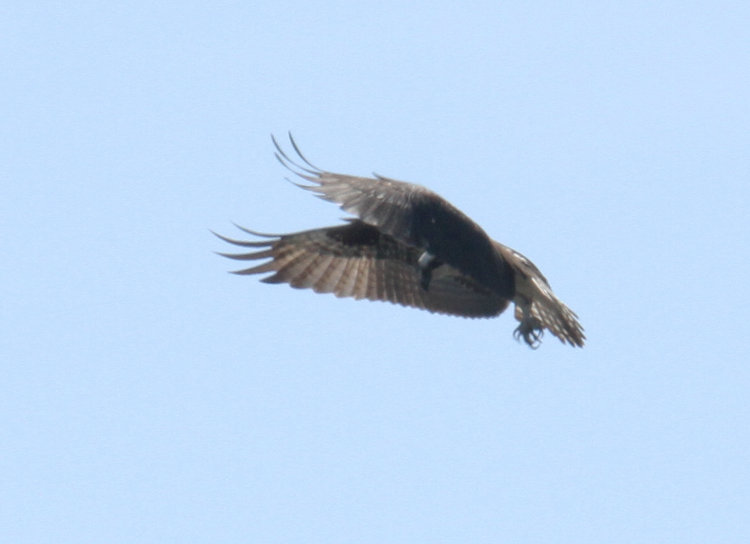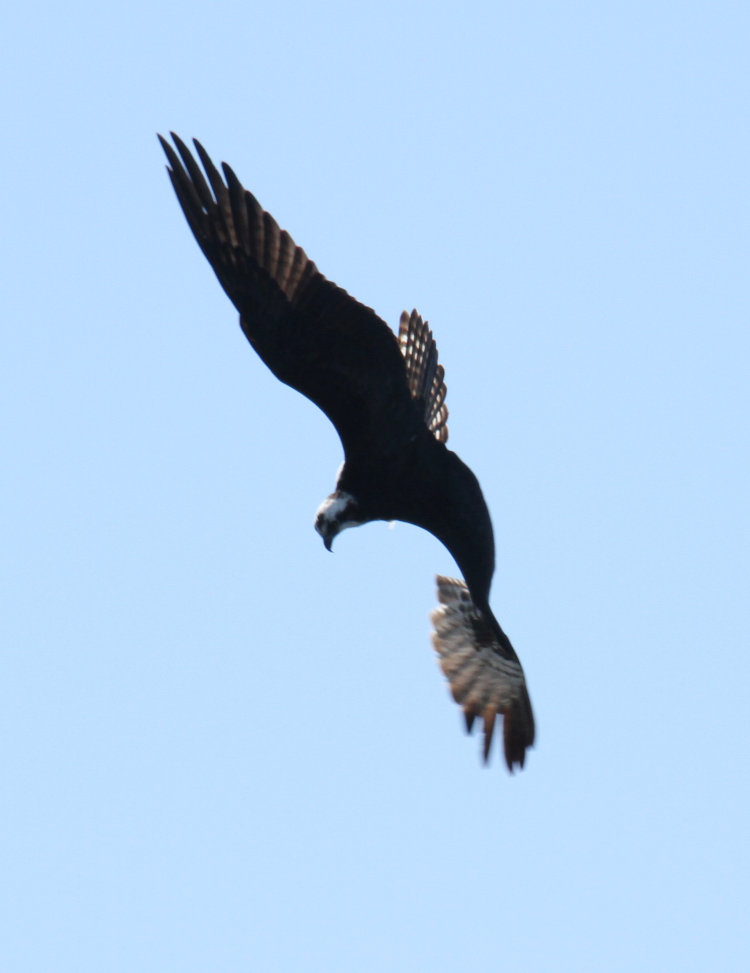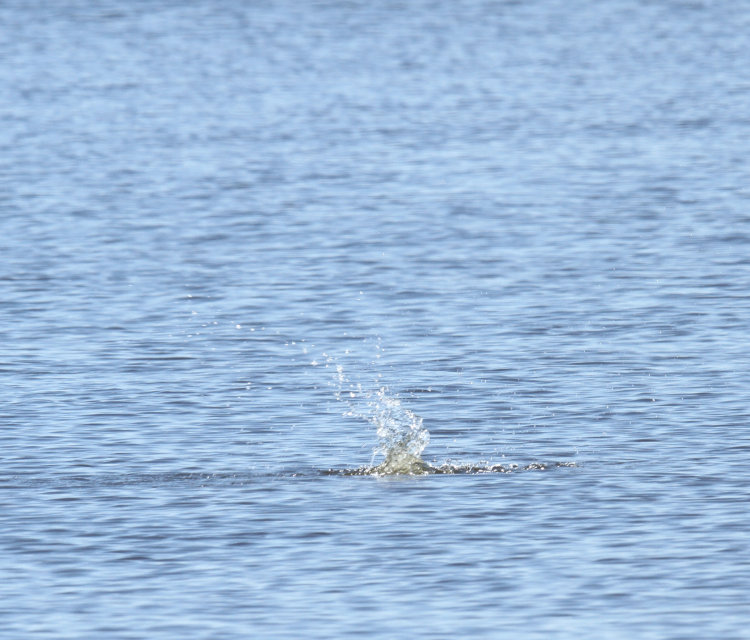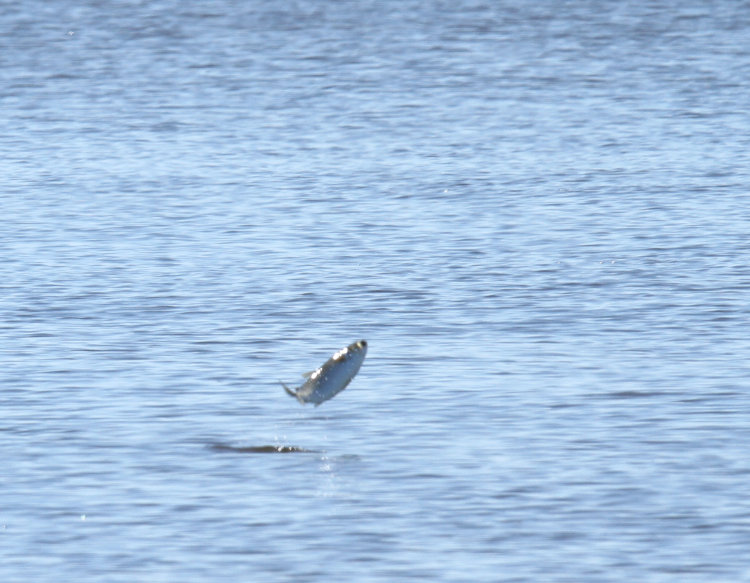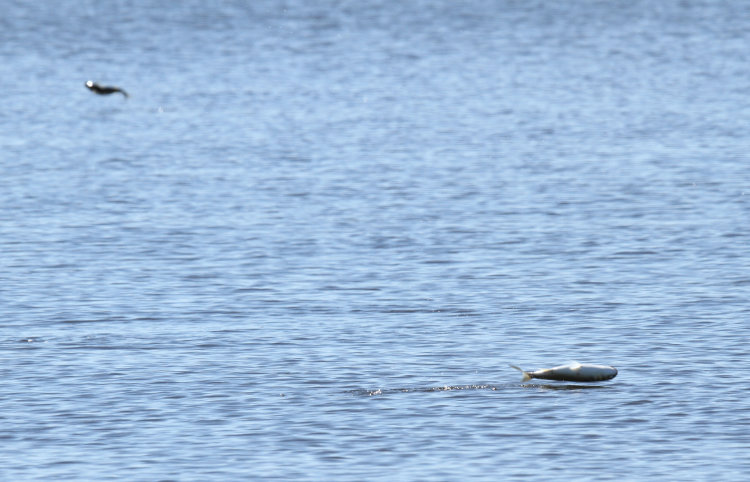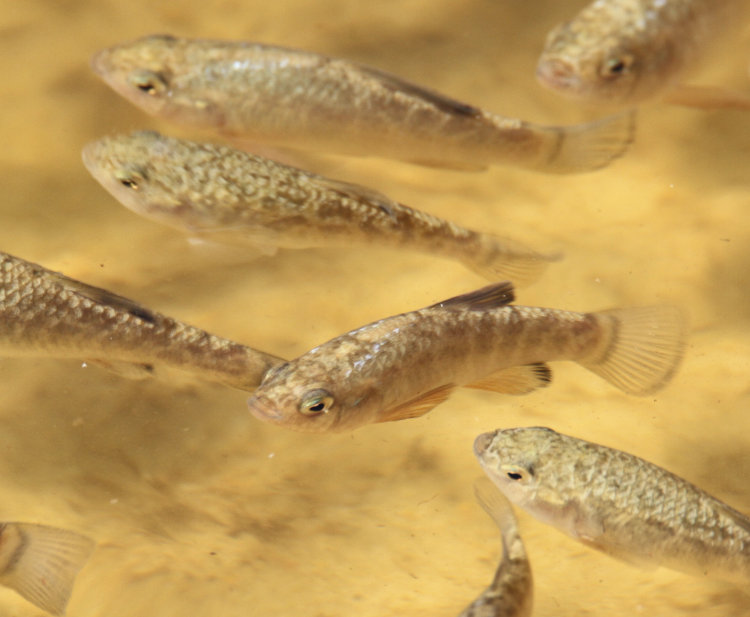The Girlfriend and I did a relatively brief trip to Goose Creek State Park, shit, over a week ago now, where I snagged a small handful of photos – nothing exciting, but an outing nonetheless. The key part, as always when down near the water, is that I was on the lookout for eagles, of which I saw none. (On a latter trip this past weekend, we found what appeared to be eagle nests in two different locations, but neither of which was within an easy drive and I’m aiming for more accessible.) So this is what I have for that trip, anyway.
Only a single osprey (Pandion haliaetus) was in evidence, but that one was circling the same area of the Pamlico River and repeatedly began a stoop towards fish below – it aborted every one as the fish disappeared. I’ve just deleted countless images that were potentially the sequence of the full dive, only to reach no denouement. But some of them still looked pretty dynamic.

Here, the osprey obviously spots something, halting its circling motion into a near-hover, talons extended, before beginning its dive. The talons are a great indication, since osprey at least will immediately drop the talons low if they spot a potential meal – or if they’re disputing territory with another bird (not necessarily another osprey.)

I like this one for the odd pose and that wing, twisting as it realigns for the dive – the top of the head is to the left, while the bird’s back is more towards us, but facing right. This is why I might blow a lot of frames as the action begins, because this pose existed for only a fraction of a second.

Beautifully vertical dive now, wings half-tucked and eye on the target. Not that this helped at all, because the dive was aborted only seconds afterward. One attempt made it all the way down to within a meter or so of the surface, but the fish were either fickle or wary, and I saw no captures this session.

I have way too many pics like this, but the sky and the pose and the detail worked, so here we have it. Meanwhile, there may be other portions of the park where the osprey are more active (or more lucky) and we just haven’t discovered them yet. Still exploring, still building data.
Now, at multiple times during the outing, some nice-sized fish were actively jumping, though at no point was the osprey there, nor inclined to come zooming over from where it had been. But it was happening frequently enough that I tried to capture a fish out of the water in mid jump. By a large margin, what I got were always a hair too late.

I keep telling myself that I should be quicker, since the jump should last long enough for me to trip the shutter, but it all depends on whether I’m aimed in the right direction or not, doesn’t it? And focused for the correct distance; both of these are highly variable. But I did eventually claim success, if not exactly an impressive example:

I can’t say what they were, nor exactly how big they were since distances across open water are far too difficult to judge, but they should have provided a decent meal for the osprey at least. I even caught a frame with two of them in the air simultaneously:

This gives a hint of the variability, and the difficulty in knowing where to pre-focus. Years back out at North Topsail Beach, there was a species that always seemed to jump three times in succession, which made it a little easier, and from what little I can see of the body details, these look like they might be the same, but I’m not terribly confident in that, and these were only jumping once.
Up very close to shore, several schools of unidentified fish fry were darting back and forth, occasionally stirring the surface into a momentary froth as they zoomed away from some unseen (or merely perceived) danger.

I’ve never been good with fish species and these were neonates anyway, so we’re going with “fish.” The schools were very tightly packed, as this implies, but hardly worthy of an osprey’s attention.

Any fish people out there? Is this enough to identify them? They were about 50-70mm in length, and as you get a hint of here, their topmost scales would flash brilliantly in the sun, though more electric blue than this shows. The Pamlico River is an estuary, open to the sound within the barrier islands, though many kilometers distant; what this means is that the salinity of the water here varies considerably with season, winds, and rainfall. We caught no hint of ‘salt air’ while there, but then, we have these, which were present in surprisingly large numbers:

Near as we could tell, they were all the same species, though in widely variable sizes, from perhaps 15mm up to ones like this, somewhere in the vicinity of 90mm across the bell and better than 150 in tentacle length. I had nothing to collect any of the smaller ones within, so I couldn’t bring a specimen home for detail shots – I did what I could onsite.

There hadn’t been any storms recently, and especially not pushing in from the east where the closest ‘ocean’ water is, but who knows how the currents and prevailing winds work in the river and sound? This was right on a public beach access and popular swimming spot, however, and even though there somehow wasn’t another soul to be seen on the beach, we notified a park employee on our way out, who did seem surprised. We haven’t been back since to see if this persists or if it was only a brief thing. Though they might have been a lot more dangerous than I surmised, since a short while later, we saw what appeared to be a sullen teenage Grim Reaper wading ashore:

This is with the 600mm lens, so it was quite a ways offshore. Subsequent close examination revealed it to be merely an ancient tree stump, however:

What gets me about this is, this was a long ways offshore, indicating that either it remained very shallow in this portion of the river, or there was a small former island out there.
And finally,

This guy made the barest of appearances around the edge of an old snag, before flying over to a more visible spot for the photos. The white line above the eye, pale legs, and dark-tipped bill place this as most likely a spotted sandpiper (Actitis macularius,) especially since they’re quite common throughout the east coast. Identification of sandpipers can be tricky, since they change plumage throughout the year and have no small variability while between these stages, so if I’m wrong, they’re to blame, not me. But check out the barnacles on that snag, which suggest that the water level gets a lot higher than this at times, or at least has for a significant period in the recent past. Which makes that lone stump even more curious, but there we go.
That’s a few more out of the folder, and the sorting is now done, so, progress! While I’m not going to set a personal record (the dumbest kind of record) for number of photos uploaded in a month, this has already beat out everything in the past five years, so I got that going for me, which is nice. Still more to go.





















































 Then Saturday, June 7th, is
Then Saturday, June 7th, is 

































